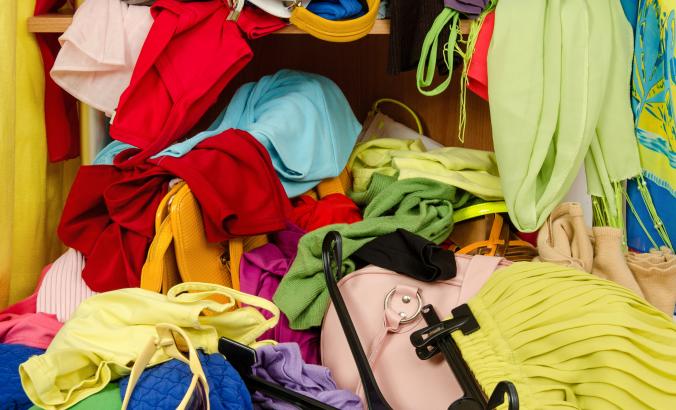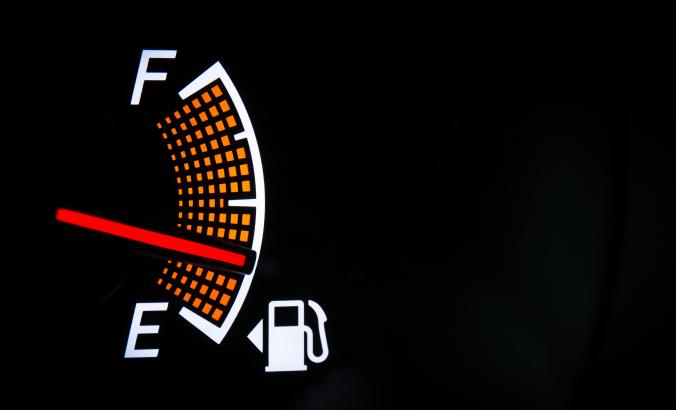绿色和平组织演出交易员乔e's on Sustainable Seafood

Whatever you think of the people atGreenpeace,you’ve got to admit they are environmentalists with a sense of humor.
Recently, Greenpeace published a scorecard that ranks supermarket chains on the sustainability of their seafood. It’s a serious analysis, intended to guide shoppers to those stores that recognize their responsibility to protect the oceans, and to pressure those stores that don’t. In the argot of activists, this is known as a “name ‘em and shame ‘em” strategy.
Then Greenpeace went a step further. It ridiculed Trader Joe’s, the national supermarket chain with the lowest ranking, by creating a website calledTraitor Joe’s(“Your one-stop shop for ocean destruction”), producing an amusing video (atwww.traitorjoe.com) and sending protesters dressed as Orange Roughy to a Trader Joe’s outlet in San Francisco, calling on the company to clean up its act.
While these tactics might not be well suited for, say, theWorld Resources Institute, the diversity of the environmental movement is a wonderful thing. Activists at groups like Greenpeace, Rainforest Action Network or Friends of the Earth function, in essence, as the business development arms of the more collaborative, mainstream groups like the Environmental Defense Fund or Conservation International. Companies under attack from Greenpeace or RAN often ask EDF or CI to help them dig out of trouble.
我没有写很多关于绿色和平组织,而我的妻子, Karen Schneider, worked there, but she has since moved on (to become a vice president for communications at theNational Women’s Law Center), so I feel more comfortable reporting on Greenpeace. The Greenpeace gang can be aggressive—they oppose the Waxman-Markey climate change bill because, they say, it’s too weak to deal effectively with the threat of global warming—but to the surprise of some, they have also collaborated effectively with companies like Coca-Cola and Unilever, around the issue of HFC-free refrigerants. And they do solid research.
Greenpeace’s seafood study, calledCarting Away the Oceans: How Grocery Stores are Emptying the Seas, is worth a look. It ranks 20 supermarket companies and assesses their seafood policies (if any), initiatives they are taking to promote sustainability (again, if any), their approach to labeling, and their sales of so-called “red list” fish, meaning fish that Greenpeace deems imperiled or those that come from fisheries that harm sea turtles, dolphins, seals, sea lions, or other marine mammals. Red list fish include, among others, Atlantic Cod, Atlantic haddock, Atlantic salmon, Atlantic sea scallops, Chilean sea bass, grouper, monkfish, ocean quahog, Orange Roughy, red snapper, redfish, skates, South Atlantic albacore tuna, swordfish, tropical shrimp and yellowfin tuna. (For another look at what seafood to buy and why, see theSeafood Watchlist published by the Monterey Bay Acquarium.)
Fortunately, there is some good news in Greenpeace’s scorecard, its third since 2008. More than half of the supermarket chains in the U.S. have made some progress in increasing the sustainability of their seafood operations, the group says. The Wegman’s chain received Greenpeace’s top ranking followed by Ahold USA, while Whole Foods dropped to third place from its first-place finish last December. Wal-Mart ranks No. 7. On the plus side, the report says:
Photo of Atlantic salmon and other fish — CC licensed by Flickr userEric Kilby.
Recently, Greenpeace published a scorecard that ranks supermarket chains on the sustainability of their seafood. It’s a serious analysis, intended to guide shoppers to those stores that recognize their responsibility to protect the oceans, and to pressure those stores that don’t. In the argot of activists, this is known as a “name ‘em and shame ‘em” strategy.
Then Greenpeace went a step further. It ridiculed Trader Joe’s, the national supermarket chain with the lowest ranking, by creating a website calledTraitor Joe’s(“Your one-stop shop for ocean destruction”), producing an amusing video (atwww.traitorjoe.com) and sending protesters dressed as Orange Roughy to a Trader Joe’s outlet in San Francisco, calling on the company to clean up its act.
 |
While these tactics might not be well suited for, say, theWorld Resources Institute, the diversity of the environmental movement is a wonderful thing. Activists at groups like Greenpeace, Rainforest Action Network or Friends of the Earth function, in essence, as the business development arms of the more collaborative, mainstream groups like the Environmental Defense Fund or Conservation International. Companies under attack from Greenpeace or RAN often ask EDF or CI to help them dig out of trouble.
我没有写很多关于绿色和平组织,而我的妻子, Karen Schneider, worked there, but she has since moved on (to become a vice president for communications at theNational Women’s Law Center), so I feel more comfortable reporting on Greenpeace. The Greenpeace gang can be aggressive—they oppose the Waxman-Markey climate change bill because, they say, it’s too weak to deal effectively with the threat of global warming—but to the surprise of some, they have also collaborated effectively with companies like Coca-Cola and Unilever, around the issue of HFC-free refrigerants. And they do solid research.
Greenpeace’s seafood study, calledCarting Away the Oceans: How Grocery Stores are Emptying the Seas, is worth a look. It ranks 20 supermarket companies and assesses their seafood policies (if any), initiatives they are taking to promote sustainability (again, if any), their approach to labeling, and their sales of so-called “red list” fish, meaning fish that Greenpeace deems imperiled or those that come from fisheries that harm sea turtles, dolphins, seals, sea lions, or other marine mammals. Red list fish include, among others, Atlantic Cod, Atlantic haddock, Atlantic salmon, Atlantic sea scallops, Chilean sea bass, grouper, monkfish, ocean quahog, Orange Roughy, red snapper, redfish, skates, South Atlantic albacore tuna, swordfish, tropical shrimp and yellowfin tuna. (For another look at what seafood to buy and why, see theSeafood Watchlist published by the Monterey Bay Acquarium.)
Fortunately, there is some good news in Greenpeace’s scorecard, its third since 2008. More than half of the supermarket chains in the U.S. have made some progress in increasing the sustainability of their seafood operations, the group says. The Wegman’s chain received Greenpeace’s top ranking followed by Ahold USA, while Whole Foods dropped to third place from its first-place finish last December. Wal-Mart ranks No. 7. On the plus side, the report says:
"Greenpeace is delighted to announce that several of the companies included in this report have not only shown great improvement, but continue to move toward being the first large-scale “green” seafood retailers in the United States. Interestingly, each store has found avenues within its unique business model to move toward a more sustainable way of sourcing and selling seafood. Examples of this kind of innovation are evident in the actions of retailers like Wegmans, Ahold, Whole Foods, and Target, each of which has made great strides in various areas."But the report also chides the laggards, saying:
"…there remain nine retailers that have made no visible effort whatsoever to increase the sustainability of their seafood operations. These industry laggards continue to wreak havoc on our environment, with no apparent regard for the health of our ecosystems or the values of their customers.Thus, the protest below at a Trader Joe’s in San Francisco:
At this point, Greenpeace has little choice but to call out these gross offenders for who they are, and to strongly urge all consumers to avoid buying seafood from the following retailers: Aldi, Costco, Giant Eagle, H. E. B., Meijer, Price Chopper, Publix, Trader Joe’s, and Winn-Dixie.
 |
Photo of Atlantic salmon and other fish — CC licensed by Flickr userEric Kilby.




